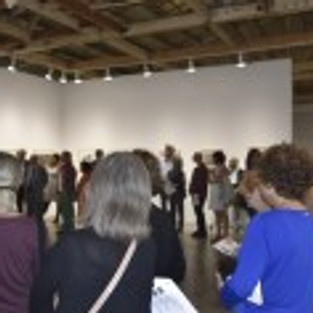From Mexico City to LA at Mixografia, Los Angeles
- artandcakela
- Oct 6, 2017
- 3 min read

From Mexico City to LA at Mixografia, Los Angeles. Photo Courtesy of Mixografia.
From Mexico City to LA at Mixografia, Los Angeles
By Kathy Zimmerer
Through October 21st
Celebrating the great printmaking traditions of Mexico City and Los Angeles, the Pacific Standard Time exhibit at Mixografia delves deeply into this vibrant imagery ranging from works by Jose Guadalupe Posada to Rufino Tamayo.
Jose Guadalupe Posada was the historical figure credited with making printmaking a vital part of Mexican Art at the end of the 19th century. His influence continues in contemporary Latin American Art and Latino Art. Posada’s striking images encompassed popular culture, politics and spirituality, including masterful portraits of contemporary figures such as General Porfirio Diaz. In the spiritual realm they included the Calaveras, Virgen de Guadalupe, crucifixes. In addition to sensational crimes, and disasters were also printed on cheap broadsides. The richness of Posada’s printmaking was an inspiration for the creation of the important Taller de Grafica Popular in Mexico City in 1937 by three revolutionary artists Pablo O’Higgins, Leopoldo Mendez and Luis Arenal. Leopoldo Mendez’s marvelous linoleum cut Homenaje a Posada, 1953 pays incisive linear tribute to Posada. In this large scale and beautifully mastered print, the great Posada works on an engraving as two revolutionary brothers stand behind him, one holding a political tract on conscripted labor while the printer watches. The Taller de Grafica Popular, like the immensely talented Mexican muralists working at the time, including David Alfaro Siqueiros, all worked closely with ancient Mexican symbols and folklore by integrating underlying issues of social unrest and injustice into their art. Another brilliant Mendez wood engraving, Lo que no Debe Venir, What May Come, 1945, shows the artist bent over his sketchbook imagining a grim future for his country. The Eagle, Snake and the Nopal Cactus are all twisted in a flurry of intricate lines- the Eagle, the symbol of the Mexican Republic, hangs on an ominous looking cross, while fascists soldiers march through the city. David Siqueiros’ prime lithograph, Integración De La Nacionalidad, 1953, is a stunning example of the political mingled with the mythic that is created in the artist’s monumental style.

Leonora Carrington. Stag at Mourn, 1974. Lithograph on Arches paper. Edition of 80. 22 X 30 inches. From Mexico City to LA at Mixografia, Los Angeles. Photo Courtesy of Mixografia.
Many lithographs from the Taller de Grafica Mexicana, which was opened in Mexico City by Luis Remba (Mixografia’s founder), show the progression of printmaking and the eventual dispersal of the influence of the Mexican art. An intricate, densely populated lithograph by Leonora Carrington is one of the highlights of the exhibit. Stag at Mourn, 1974, shows the artist at her surrealist height as the silhouette of a stag presides over a circle of odd beast and human figures. Also, prints from the Taller de Grafica Mexicana show the artists’ interest in the ordinary transformed into the extraordinary, such in Pablo O’Higgins’ color lithograph, Dos Mujeres, 1973, as two striking women walk into a barren landscape with strong but weary resignation.
Early works and current work by artists of the Mixografia studio (originally in Mexico City then Los Angeles) are also prominent players in this story of Latin American/Latino printmaking. The Mixografia studio developed a new technique of printmaking with a new resilient paper adapted for three dimensional printing methods which is part of the continuing legacy of artist Rufino Tamayo who first started using the Mixografia print process in 1973. Tamayo produced 67 print editions using the Mixografia process of which a wonderful, glowing study of two abstracted watermelons is an important example in Sandias, 1980, Mixografia print on handmade paper. Francisco Zuniga’s print Grupo, 1982, takes full advantage of this process as his characteristic volumetric figures have their curves filled out in this whimsical work of art. Current work by contemporary artists include the pop influenced Mixografia print by Abraham Cruzvillegas, Ichárhuta, 2017, a marvelous dimensional play on the variable and tenuous state of Mexican currency.
#losangeles #losangelesartist #joseguadalupeposada #art #painting #mixografia #onlineartmagazine #losangelesart #contemporaryart #FromMexicoCitytoLA #LatinAmerican #MexicoCity #artgallery #RufinoTamayo #PacificStandardTIme #artandcake #artexhibition #ArtandCakeLA #fineart #artists #artist #mixedmedia #arts #artreview #KathyZimmerer #artexhibit #artmagazine #latin #ArtandCulture #PST #mexicanart #losangelesgallery #visualart #drawing










































